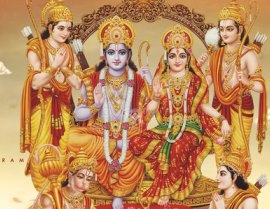Events

Makar Sakranti
Makar Sakranti is one of the few Indian festivals celebrated according to the solar calendar, on the 14th of January every year, when the sun enters the Makara rashi (Capricon). The word Sankramana in Sanskrit, means “commencement of movement”. After this day the days start becoming longer because of earlier rising sun.
It is widely celebrated all over India and neighboring regions in different forms such as Magh Bihu (Assam), Maghi and Lohri (Northern India), Sukarat (Central India), Thai Pongal (Tamil Nadu), Uttarayan or Ghughuti (Central India), Makara Sankranti (Southern and Western India), Sankranthi (Andhra Pradesh, Telangana), Happy Maghe Sankrat (Nepal), Happy Songkran (Thailand), Happy Thingyan (Myanmar), Happy Mohan Songkran (Cambodia) and Happy Shishur Sankrat (Kashmir).
According to legends, Lord Sun never got along with his son, Lord Shani. However, on the day of Makar Sankranti, Lord Sun visits Shani and finally forgives him. Hence this day signifies a day of love and peace. The underlying theme on this day is the social festivities done outdoors celebrating the harvest of winter (Kharif) crops such as rice, peanuts, sugarcane, maize and sesame (til). Sweets and dishes are made using the bountiful harvest of these crops, which also bring warmth to the body. Many people take a dip in the holy rivers to clean themselves of sins. Others fly kites as a tribute to the sun. People sing and dance around bonfires, which encourages social bonding. The famous Kumbh Mela in Uttar Pradesh also begins on this day.
Read more
Basant Panchami
Celebrated on the 5th day of bright half of the lunisolar calendar month of Magha (February 16, 2021), this is the festival that marks the preparation for the arrival of Spring. This festival is dedicated to the goddess Sarasvati and many people do a puja on this day in her honor. Sarasvati is the goddess of knowledge, language, music and the arts. She is the symbol of creative energy and power.
Indians from all over the subcontinent typically associate the color yellow with Sarasvati and thus wear yellow sarees and accessories on this day. The yellow is also in celebration of the ripening of the agricultural fields as seen in the yellow flowers of the mustard crop. Continuing the prevalence of yellow, many people also add saffron to their sweet dishes and rice as part of the feast shared with family and friends.
Read more
Holi
Holi is an abundant celebration of Goodness and the season of spring.The day of Holi on Falgun Purnima (full moon day) is observed a fortnight after Mahashivratri. Spiritually, it signifies light prevailing over darkness, fear & ignorance.
Holi is associated with ‘Mal Utsav’ - the smearing of colors. Holika bonfire in which dry sticks and cow dung are put to fire, and corn seed burnt to the point of losing its power to germinate. The fire represents the burning away of the old and worn out .The festivities of Holi have a central message – let the bygones be bygones, bury old hatchets & start anew in the spirit of spring. The wise attribute a deeper meaning to the Holi fire- that the harsher propensities of human beings should lose themselves in the heat and light of divine knowledge and meditation.
The history & scriptures throw light on the origin of the festival.The story of Prahlad in Vishnu puran projects the victory of good over bad. Prahalad is devoted to Lord Vishnu while his father, King Hiranyakashyap is an atheist engaged in religious persecution. To distract his young son from the path of devotion, the father resorts to ruthless methods, but fails. Finally, the evil king takes the help of his sister Holika who was blessed by Lord Brahma not to be consumed by fire. She enters a bonfire taking Prahlad in her lap. For misusing the boon, Holika is burnt to ashes while Prahalad comes out unscathed. The unrelenting Hiranyakashyap tries to kill his son’s mentor Lord Vishnu who emerges from a pillar as half-man, half-lion or Lord Narsimha and destroys the king. After annihilating Hiranyakashyap, Lord Narsimha blesses Prahalad and enthrones him as the successor to his father’s empire.The people rejoice over the death of the evil king and coronation of Prahlad by playing with colors. This celebration has come to be known as Holi.
The festival assumes its true colours in Mathura and Vrindavan where it is played in memory of Krishna’s dalliance with Radha and the other gopis of Gokul. People throng Krishna and Radha temples, throw colours at each other and deities before which they sing, dance and pray. Holi is also observed as ‘lathmar’ Holi in Barsana (Radha’s birthplace) where women of village use bamboo sticks and brooms to keep menfolk at bay! Besides, Holi processions are taken out on the streets, with decorated carriages displaying the Hindu pantheon of gods and goddesses led by Shiva on bull’s back.
Although Holi is a Hindu festival, its spirit engulfs all communities and sections of society. Muslim kings like Humayun and Akbar patronized Holi celebrations during their rule. Even today , people of different faiths are invited to Holi Milan programmes where they meet and greet each other, share sweets and jockes, recite poems and songs, play colours, games and dramas in an atmosphere of peace and brotherhood.
Read more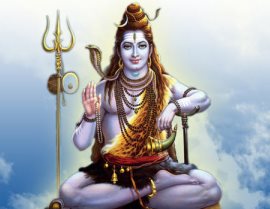
MahaShivratri
Mahashivratri is a festival that honors Lord Shiva. Devotees of Lord Shiva stay awake all night on this auspicious night of Shivratri. Some perform poojas, chant Vedic mantras, practice sadhana and meditation. These sacred practices bestow a sense of peace and oneness within us and with the world.
Ratri means ‘night’ and also 'to take refuge.' Shivratri is the night we take refuge in our spirit i.e., Shiva. It is the time to celebrate the soul or consciousness within. During Mahashivratri, we practice sadhana and take refuge in the divine consciousness. There are two ways to do this: meditation (sadhana) and surrender. Surrender is having the faith that there is a divine power that is taking care of us. Sadhana and surrender bring peace and solace to us and help us to experience the true significance of Mahashivratri.
Symbolism of Lord Shiva
Lord Shiva is considered the soul of everything. There is no difference between our soul and Lord Shiva. Since Lord Shiva symbolizes truth, peace, beauty, and infinity, He represents the essence of our soul as well. It is what we are made of. When we worship Lord Shiva, we recognize these higher qualities within ourselves.
Mahashivratri is the day when the Shiva Tattva is believed to come in contact with the earth. It is said that our consciousness or aura is, generally, ten inches above the material ground. On this day, this consciousness descends and touches the earth element. It is a good time for our inner consciousness to come alive within our body. That is why a spiritual seeker has a special significance for Mahashivratri. It is the wedding of the material with the spiritual.
Read more
Easter Egg-hunt
The egg is traditionally known as a symbol of new life and rebirth and is associated with Spring.
The Egg Hunt dates back hundreds of years as adults hid eggs filled with chocolate. Coming in bright colors and different sizes, children would then attempt to find the hidden eggs to collect prizes. Remember, if your little one asks, we didn’t hide the eggs, but the Easter Bunny did.
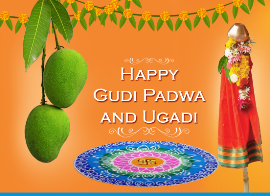
Gudi Padwa/ Ugadi
Ugadi
Ugadi/Yugadi is the telugu new year, Yugadi is a sanskrit term meaning beginning of a new era. Ugadi welcomes the season of spring and telugu calendar starts on this day. Apart from the traditional dishes like pulihora (tamarind rice) and bobbotlu (sweet chapati) ugadi pachadi is the most important one. This is a chutney that consists of all the five tastes or flavors- sour, bitter, sweet, salty, and tangy symbolizing the different tastes of life. Salt represents "interests in life", sweet/jaggery represents the "happiness", tamarind or sour taste symbolizes the "challenges" while neem flower or bitter taste symbolizes "difficulties in life." Raw mango or tangy taste symbolizes "surprises" or “sudden challenges" while chilli powder or spice refers to "angry moments".
Gudi Padwa
In the Chaitra month of Hindu calendar, winter starts to fade away and the summer is started. It is believed that on the day of Gudi Padwa the Lord Brahma created this whole universe. People also believe that on the day of Gudi Padwa Lord Rama completed his exile and returned to his home in Ayodhya. The shape of Gudi symbolizes the human body and copper vessel (Kalash) on the top of the Gudi is a human head and the bamboo symbolizes the backbone of the human body. Gudi Padwa is the time to begin new things in life. It is believed that the things started on Gudi Padwa always finish successfully.
Read more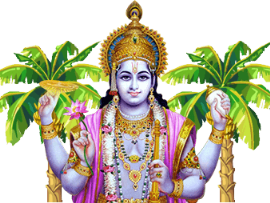
Shri Satyanarayan Puja
Shri Satya Narayan Puja is very popular in all parts of India and abroad. This puja is done for the removal of the all sins and for fulfilling wishes, and prompts bhakti (devotion) in devotees. At the beginning of the Kalyug period, Rishis in the forest of Naimisharanya asked Sutaji that which puja and vrat was very easy for the people in the Kalyug era in order to get their all wishes fulfilled without a huge effort. To which Sutaji described this puja, which was originally told by Bhagvan Shri Vishnu himself to Shri Narad Muni. Bhagvan said this puja and vrat pleases me and I bestow all their wishes.This puja can be performed on a full moon day with family and friends with Satvic bhojan as prasad.
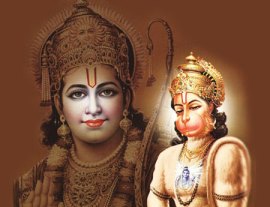
Hanuman Jayanti
The holy Hanuman Jayanti or Hanumath Jayanti festival celebrates the birth of Hanuman as per Hindu calendar, one of the prominent heroes of the Indian super epic Ramayana. Hanuman Jayanti is observed in the Chaitra lunar month purnima. where a number of spiritual discourses are held in a majority of Hindu temples. The different aspects of Hanuman are remembered and worshipped on Hanuman Jayanti festival day.
An ancient saying from Indian tradition says that if you want Lord Rama to terminate all your sorrows, you can reach Him only through Lord Hanuman and Hanuman Jayanti is a perfect day for this. Well, God Hanuman is immensely powerful and an absolute devotee of Lord Rama. He is the granter of happiness and destroyer of problems. It is further believed that continuous reciting of the famous Hanuman Chalisa can help one overcome all sorrows and acquire supernatural powers. As Hanuman is very powerful, so his worship has become very powerful.
Hanuman - the dearest of Janki and the supreme devotee of lord Rama. He symbolizes surrender, devotion, and the absence of ego. It is said worshipping Hanuman alleviates all fears and makes us dearer to Lord Rama.
Read more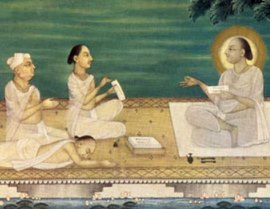
Vallabhacharya Jayanti
After over two thousand years of intentional destruction of Sanatan (Hindu) dharm by Baudh, Muslims and English, some powerful scholars like Ramanujachary, Nimbarkachary, Madhavachary and Shri Vallbhachary came with systematic bhakti movement for all the people regardless of cast or creed. Shri Vallabhachary born in 1479 in Champaran, now in Chattisgarh in India. At the age of 10, he learned all Ved-puran and all scriptures and proved his Suddhadwait philosophy in a huge debate that lasted for 29 days in Vijaynagar of South India. He established Pushtimarg, which means the path of Krupa and teaches Shri Krishna Bhakti by introducing Shrinathji Bhagvanand his leela. There are countless devotees of this Pustimarg all over the world.

Mothers Day
Mother’s Day is the holiday honoring motherhood that is observed in different forms around the world. “Maatru Devo Bhava” or “Honor Thy Mother as God” is part of the earliest teachings for children in Hinduism. This day is typically marked with families honoring mothers or maternal bonds. While typically seen as the central pillar that holds a family together, mothers come in many forms such as grandmothers, aunts, and even fathers.
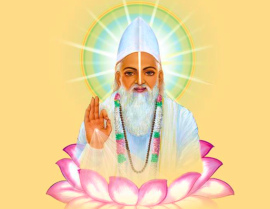
Kabir Jayanti
Kabir Jayanti or Kabir Prakat Diwas is held on the full moon day of Hindu Jyeshtha month (May or June) to celebrate the birth of Kabir Das. Kabir was an Indian poet and saint born in 1398 AD in Varanasi. He stood up for neutrality of religion spreading his teachings and philosophies of life through short couplets and songs such as this famous one, “Kal karo so aaj kar, Aaj karo so ab; Pal mein pralaya hoyegi, Bahuri karoge kab” (Finish tomorrow's task today, And today’s task right now; When would you finish them, If the world were to end next moment). The teachings of Kabir are called Kabir Panth, and their followers are called Kabir Panthis. On the day of Kabir Jayanti, they remember his teachings and recite his poetry. Bhandaras (mass feast) are held, and social work is done throughout the day.

July 4th
Independence Day is a national holiday commemorating the Declaration of Independence or the birth of American Independence. Written by Thomas Jefferson, this document serves as one of the three essential founding documents of the United States government. Celebrated on July 4th, this holiday is typically celebrated with concerts, baseball games, parades, barbeques, picnics, and most definitely fireworks. It’s a day to celebrate life, liberty and the pursuit of happiness, the principles on which the American nation was founded.

Guru Purnima
Guru Purnima is a tradition of celebration of reverence for Guru. It is also known as Vyasa Purnima and is birthday of Vedam Vyas. Vyasa was author of Mahabharata and numerous other Hindu spiritual works. We have been always taught ‘Acharya Devo Bhavah’ which means Guru is a form of Dev (divine). Guru shows us path to righteousness and spiritual freedom leading us to God.
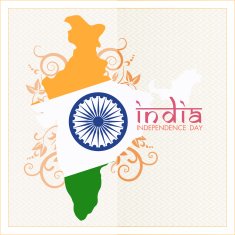
India’s Independence Day
The culmination of events which included sacrifices of millions of Indians in blood and in livelihoods, applying the genius of Nonviolence (“God has vouchsafed to me a priceless gift in the weapon of Ahimsa”-Gandhiji) and Non-cooperation, during the post WWII England and the Labor Party coming to power; all brought together in one final moment of August 15th 1947, the Independence day of India. It ended the tyrannical British rule of almost 200 years and set India as one unified Bharatvarsh on it’s course to be a future world leader.
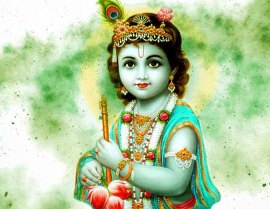
Janmashtami
Janmashtami is the day of the birth of Lord Krishna. Janmashtami festivities continue for two days and reach its peak at midnight of the first day. This is the time when Lord Krishna is said to have been born. During the midnight celebration, lord's idol is bathed with Panchamrit and then the cradle is rocked. Devotees fast all day long and break it after the birth of Bhagwan Krishna at midnight. People celebrate Janmashtami with dance and music. They sing praises of his Leela.As Lord Krishna was very fond of sweets, milk and other milk products like butter and buttermilk, so his devotees make sweets of these products to commemorate the occasion. Dahi handi is a popular ritual where an earthen pot (handi) full of yoghurt (dahi) is hung from a high rope, and people climb up in a human pyramid to break the pot.
Lord Krishna represents Anand-tattva (the element of Bliss) that is manifest throughout Creation. Everything has emerged from that Anand-tattva. This is the special message of Janmashtami. Krishna was the son of Devaki and Vasudev. Devaki symbolizes the body and Vasudev symbolizes the life force (prana). When prana rises in the body, joy (Krishna) is born. The message of Janamashtami is that it is time to bring a wave of joy in society. Krishna is also known as the butter thief. Milk is the essence of nourishment and curd is a cultured form of milk. Krishna stealing butter is a symbolism depicting the glory of love. So attractive is Krishna’s charm and skill that he steals the minds of even the most dispassionate.
Read more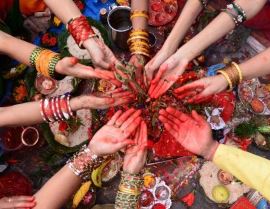
Teej
Teej is a widely celebrated festival by Hindu women in many parts of East Asia, mainly in Nepal, North and Central India. This festival is primarily dedicated to Lord Shiva and Goddess Parvati. It marks the day when Lord Shiva accepted Goddess Parvati's love towards him. According to the legend, Goddess Parvati wanted to marry Shiva, but her father had accepted Lord Vishnu's marriage proposal for her. Therefore, she asked her friends to help her hide in an isolated place in the middle of a dense forest. Her friends helped Parvati by saving her from a marriage she did not approve of. Eventually, Parvati, who engaged in extreme austerity (tapasya) to please Lord Shiva, succeeded in winning his attention as well as his heart.
There are several types of Teej celebrated during different times in different geographic locations of India and Nepal: Hariyali Teej, Kajari Teej, and Hartalika Teej, Haritalika Teej being the most popular one. Haritalika Teej falls on the third day (Tritiya tithi) of the full moon in the Hindu month of Bhadrapad. Following a big feast (known as Dar), women in all stages of life fast for 24 hours, praying to Lord Shiva for long lives of their husbands and the well-being of their families. Women wear red (or similar colored) dresses, tika (bindi), sindur, churi (bangles), pote (traditional necklace made out of green/red glass seed beads), tilahari (big cylindrical pendant added to seed bead necklace), and put henna on their hands.. Women dance, sing and swing with other female companions or with their husbands. They worship Lord Shiva and Parvati by offering flowers, fruits, and incense.
Read more
Ganesh Chaturthi
Lord Ganesh or Ganesha is the Hindu God with the head of an elephant, who is the son of Lord Shiva and Goddess Parvati, and is believed to be the God of fortune and prosperity. Worship of Lord Ganesh often precedes any major Hindu family, religious or cultural event as Lord Ganapathi or Vinayak (other names widely used) is believed to protect from any obstacles.
Ganesh Chaturthi is a popular Hindu Festival celebrated all over India to signify the birthday of Lord Ganesh which occurs on Bhadrapada Shukla Chaturthi (Indian calendar) which usually falls during Aug-Sept period. Besides prayers, worship and devotional singing, special food dishes and sweets, including ladoos, Lord Ganeshas favorite sweet, are offered to God and later distributed as prasaadam. Most often the celebrations go on for ten days after which the Ganesh idols are taken in procession in the streets with chanting and music, to be immersed in lakes, river or sea, often referred to Ganesh Nimajjan. Lord Ganesha is also worshiped in other countries such as Thailand, Cambodia, Indonesia, Afghanistan, Nepal and China.
Read more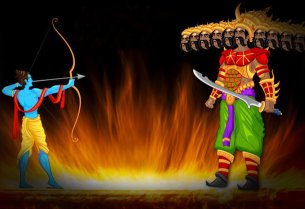
Dusserah
After nine days of Navratri, the tenth day, which is celebrated as Dusserah or Vijayadashami signifies the victory of good over evil. According to the Ramayana, Vijaydashami marks the day that Lord Rama defeated the demon king Ravana. The tenth day after Navratri also signifies the victory of Goddess Durga over the demon Mahishasura. Everywhere the idols of Ravana are being burnt. Ravana is symbolic of the ego. Ego does not have just one face, it has 10 faces (here representing the aspects or causes of ego). One who is egoistic thinks himself to be superior to others. Lord Rama is the symbol of Atma jnana (Self-knowledge); He represents the Soul. Lord Rama represents both – the Self and Self-knowledge. When Self-knowledge (Lord Rama) dawns within a person, then the Ravana within (meaning ego and all negativity) gets destroyed completely.
Read more
Durga Ashtami
Astra Puja on Ashtami Day Ashtami, the eighth day of Navratri is also known as Astra Puja and known as Virashtami. This is because all weapons are propitiated and worshipped on this day along with a display of martial arts. As an answer to the prayers of gods and humans, Ma Durga decided to annihilate the demon Mahishasura, the buffalo faced giant. As she prepared for the war, all the gods gave their divine weapons and powers to Ma Durga. All those weapons were worshipped and handed over to Ma Durga on the day of Ashtami and therefore the day came to be called as Astra Puja. Another name ‘Virashtami’ attributed to this day heralds the courage and valor of Ma Durga.
The emergence of Ma Kali (Ashtami) On the day of Ashtami, Ma Kali emerged from the face of Durga. In addition, Ashtanayikas or the eight aspects of Durga emerged from her and assumed their roles in the war. Therefore on the day of Ashtami, the war with Mahishasura gained full momentum and force. There was a fierce battle between Kali and the demons Chanda, Munda and Raktabhija. As part of the Navratri puja, Ashtami is so significant in worshipping the 64 Yoginis, Ma Kali, Ma Durga and the Ashtanayikas.
Read more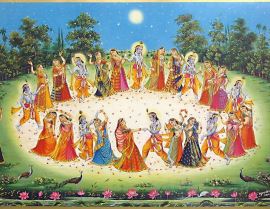
Sharad Purnima
It is said that Divine dance happened on the day between Lord Krishna and the Gopies – symbolic of grateful devotees. It is said that Lord Krishna danced with all the Gopis under this moon so many thousands of years ago. Sharad Poornima is known for dance and celebration. It is the time when devotees feel the presence of the Divine in their life. Sharad Purnima is considered to be the best, the biggest and clearest. It is said that the face of Mother Divine (Devi) is like the moon of Sharad Purnima.
Spiritual Significance-
The sky is clear and the largest moon shines brightly. Our mind and the moon are connected. When the moon is full, the mind is also full. The energy on the day is very high and celebration will keep it up. But this energy needs to be channelized in a positive direction.
Read more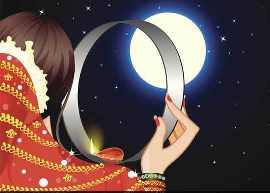
Karva chauth
Karvachauth is celebrated on the 4th day after Purnima (full moon) in the lunar month of Kartika (usually falls in October/ November). On this day, married women fast, often without even drinking water, from sunrise to moonrise for the health and wellbeing of their husbands. It is celebrated in several states across North India. The word “karva” means an earthern pot.
Women wake up before sunrise and have a meal called “Sargi” usually prepared by their mother-in-law. They put Mehendi (henna) on their hands, and dress up in their finest clothes, jewellery and make-up. In the late afternoon, women from the community get together to perform the Karvachauth puja sitting on the floor in a circle. An older women usually narrates the story and sings a song, while the puja Thali containing the Karwa is passed around the circle seven times. “Baayna” is food offered to the god and then given to mother-in-law. After the puja, they wait till moonrise, and then open the fast usually with something sweet, after offering water from the Karwa and praying to the moon.
Read more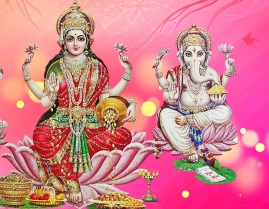
Diwali
Diwali is the festival of lights. There is a strong relationship of the festival of Diwali with our ancient epics and scriptures such as Ramayana and Mahabharata. Many events in the Mahabharata and the Puranas are related to the festival of Diwali. For example, when Lord Rama returned to Ayodhya after completing 14 years of exile, everyone in the city celebrated His return by lighting lamps everywhere. There is a deeper meaning to this as well. It means that once the light of knowledge dawns from within, then there is light everywhere in the world around us. The whole world starts scintillating with the light of knowledge. To convey the unique importance of spiritual knowledge in our life, we celebrate Diwali.
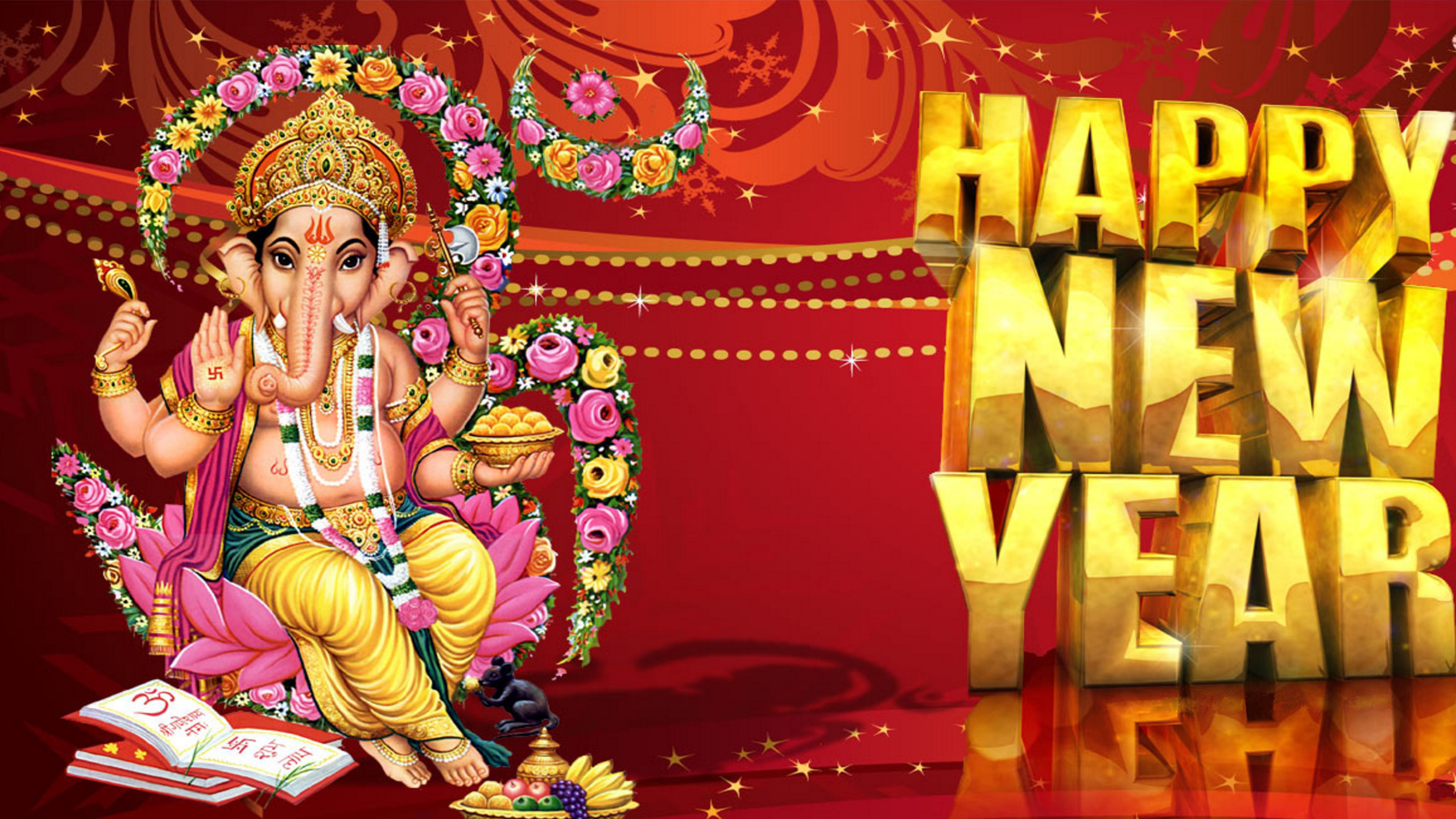
Hindu New Year
New Year's Day is celebrated on various days throughout the year depending on the regions of India. Observance is determined by whether the lunar calendar is being followed or the solar calendar. Those regions which follow the Hindu Solar calendar, the new year falls in April in the month of Vaisakh. It is called Baisakhi in North and Central India, Ugadi in Andhra Pradesh, Rongali Bihu in Assam, Puthandu in Tamil Nadu, Vishu in Kerala, Pana Sankranti in Odisha and Poila Boishakh in Bengal. Those following the Lunar calendar consider the month of Chaitra (corresponding to March-April) as the first month of the year, so the new year is celebrated on the first day of this month. In Gujarat the new year is celebrated as the day after Diwali. As per the Hindu Calendar, it falls on Shukla Paksha Pratipada in the Hindu month of Kartik. Kartik is the first month of the year and the New Year in Gujarat falls on the first bright day of Kartik (Ekam).
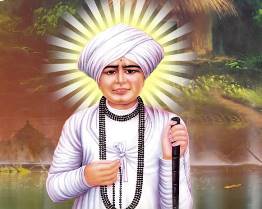
Jalaram Jayanti
Shri Jalaram bapa is a very prominent pious Saint from the State of Gujarat. He was born in a town named Virpur (Gujarat) on February 23, 1799 in the well reputed Lohana parivar. His fathers name was Pradhan Thakkar and mother’s name was Rajbai. He was very devoted since his childhood to Bhagvan Shri Ram, not being much interested in household or business activities. He got married to Virbai at the age of sixteen. After coming back from a pilgrimage, he became fully absorbed in pure devotion and started feeding the Sadhu Saints. To test his Bhakti, Bhagvan (God) himself disguised as a Sadhu came to him and asked Jalaram bapa to give away his wife to him so she can help the Sadhu. Surprisingly both husband and wife agreed that she would go with Sadhu. After seeing all this Bhagvan gave Jando (Flag) and a Joli (Bag) to Virbai mata. This two items are still kept for darshan (visiting) in Virpur.
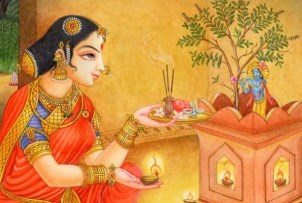
Tulsi Vivah
Tulsi is the eternal companion of Lord Vishnu and there are many benefits of doing Tulsi Puja. According to Padma Purana, Tulsi plant is the very essence of all worship and devotional activities. Every part of Tulsi, including the leaves, roots, bark, branches and flowers are steeped in spirituality. It is believed that Lord Krishna does not accept flowers, food, or sandalwood paste unless an offering of Tulsi leaves is made to him. A person who worships Lord Krishna daily with Tulsi leaves attains the results of all austerities, charity and sacrifice. Such a person has realised the essence of the scriptures and has no duties left. Such a worshipper will also release all his ancestors from the cycle of birth and death.
Tulsi was born on the full moon day in the month of Kartik and hence, this day and month is significant for her worship. Offering Lord Vishnu Tulsi leaves every day during Kartik will grant immense blessings to the worshipper. People light diyas (earthern lamps) every evening during Kartik and worship the Tulsi plant with incense, kumkum and sandal paste. The tradition is especially observed by Vaishnav households this month. People chant hymns of Tulsi and meditate on her.
Tulsi marriage is an essential part of Tulsi worship. On Ekadashi (the eleventh day) of the waxing moon in the month of Kartik, worshippers perform Tulsi vivah, the ceremonial marriage of Tulsi with Krishna. The Tulsi Vivah puja vidhi is actually the recreation of a traditional Hindu wedding ceremony conducted in the house or a temple. Tulsi marriage ceremony begins in the evening and worshippers performing this puja observe a fast until then. This is because it is believed that the soul of Vrinda lives in Tulsi plant at night and leaves in the morning. A wedding mandap is installed in the courtyard where the Tulsi plant resides. The bride Tulsi is bathed and dressed in a red sari and decked with jewellery. Sometimes, a paper human face may be put on Tulsi to give her a human touch. The groom is usually an image or idol of Vishnu or Krishna or even a Shaligram stone, bathed and wrapped in a dhoti. The marriage ceremony is followed by a traditional wedding feast. The significance of Tulsi Vivah is that it marks the beginning of the annual marriage season in India.
Read more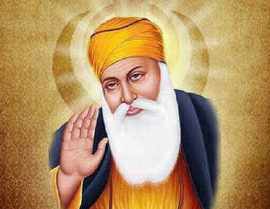
Gurunanak Jayanti
Guru Nanak Dev Ji is the founder of Sikhism and the first of the ten Sikh Gurus. His birth is celebrated worldwide as Guru Nanak Gurpurab on Kartik Pooranmashi, the full-moon day in the month of Katak (the 8th month of the Nanakshahi calendar), falling in October–November. Guru Nanak Dev ji travelled far and wide teaching people the message of one God who dwells in every one of His creations and constitutes the eternal Truth. He set up a unique spiritual, social, and political platform based on equality, fraternal love, goodness, and virtue.
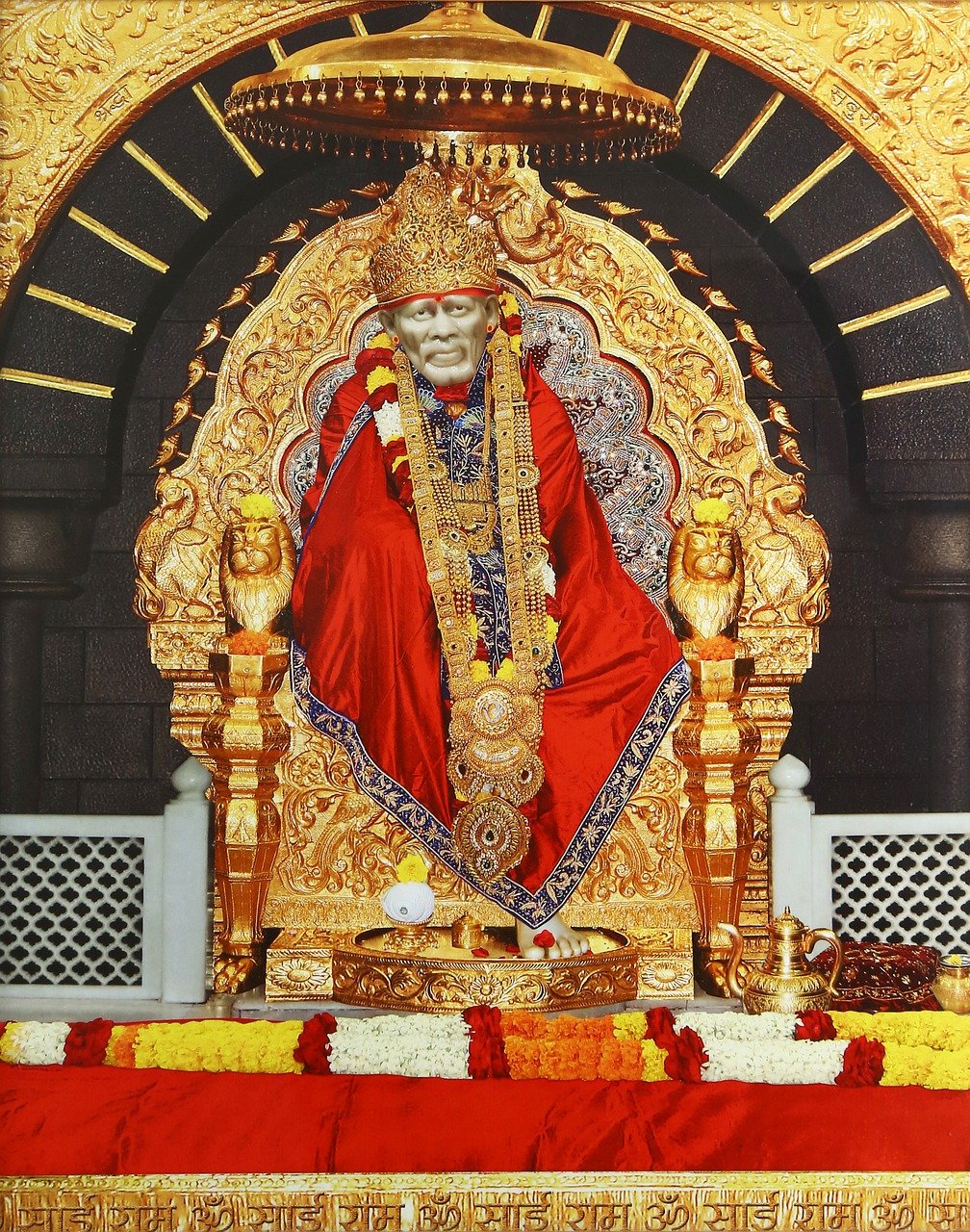
Sai Baba Jayanti
Sri Sathya Sai Baba was born as Sathyanarayana Raju on November 23, 1926. November 23 is celebrated amongst his devotees all over India as Sai Baba Jayanti. He was born in the village of Puttaparthi, in the state of Andhra Pradesh in South India. From childhood, he had a natural inclination towards spirituality which set him apart from other children of his age. He became known as ‘ Guru’ and “ Brahmajnani’ (knower of Brahman or Godhead) among his peers and others in the village. He demonstrated and preached principles of truth, righteousness, nonviolence, peace and love. His message was to love all. Where there is love, God resides. He believed in transforming that love into service and this service to take one to “sadhana”. He wanted to unite all mankind with his message of Love.

Gita Jayanti
Gita Jayanti is the celebration of the birth of Bhagwad Gita; a song divine, in form of a lyrical dialogue between Bhagwaan Krishna and his favorite disciple Arjun in the middle of the battlefield of Mahabharat or Dharmayuddha in which all questions about life and spirituality are answered ultimately declaring “Wherever there is Shree Krishna, the Lord of all Yog, and wherever there is Arjun, the supreme archer, there will also certainly be unending opulence, victory, prosperity, and righteousness. Of this, I am certain.”

Shri Gayatri Yagna
From the beginning of the time so many sacred mantras and rituals have been introduced by our Ved and ancient scriptures and one of them is Gayatri Mantra. When Gayatri Mantra is combined with Yagna, a fire sacrifice ceremony, it brings extensive benefit to the person and to the entire cosmos. Gayatri Mantra is mentioned as a Savitr (Sury) upasana in Rig Ved in the beginning of the universe. Maharishi Vishvamitra introduced this mantra in detail. Gayatri Yagna is one of the Run (Indebtedness) we have pay to pay in our lifetime as a Dev Run. Gayatri Yagna rituals brings brilliance, determination and a winning attitude in all aspects of life.
